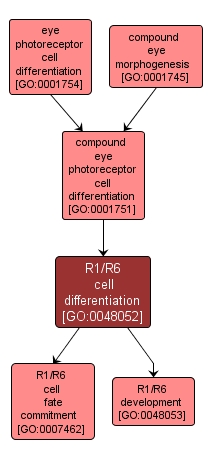GO TERM SUMMARY
|
| Name: |
R1/R6 cell differentiation |
| Acc: |
GO:0048052 |
| Aspect: |
Biological Process |
| Desc: |
The process whereby relatively unspecialized cells acquire the specialized features of R1 and R6 photoreceptors. An example of this process is found in Drosophila melanogaster. |
|

|
INTERACTIVE GO GRAPH
|














